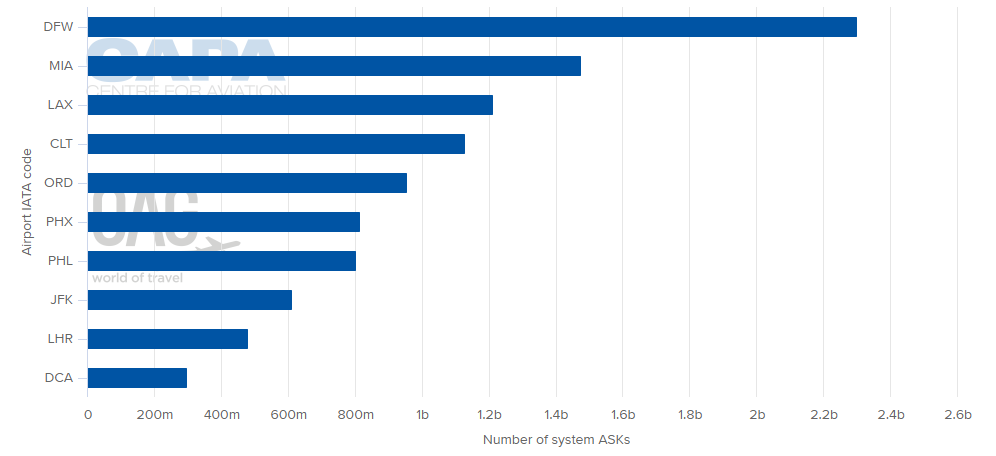During the US summer of 2017 a heat wave in Phoenix triggered 40 flight cancellations. Popular Science reports most of the cancelled fights were smaller Bombardier regional jets, which are not certified for takeoff above 118 degrees Fahrenheit. Temperatures during the heat wave reached 119 Fahrenheit.
The publication highlights 2017 findings from a study featured in the journal Climate Change examining 19 major airports worldwide and climate projections for those regions in 2060 and 2080.
There are several variables in the study, and generally temperatures where flights start running into problems depend on aircraft type, the airport's elevation and runway length. Long haul flights are particularly vulnerable since they have to carry heavier loads. However, in some cases, reports Popular Science, 90 or 100 degree heat will be enough to prevent a plane from taking off at its maximum weight.
Miami, which is home to American's second largest hub measured by ASK deployment, faces sea level rise resulting from climate change. Business Insider has reported South Florida could see a 2ft increase in sea level by 2060.
American was forced to cancel thousands of flights from Miami when Hurricane Irma struck the US east coast in late Sep-2017. There's a lot of study dedicated to determining if climate change is triggering more intense hurricanes, but as Scientific American concludes, a higher sea level adds to the water level experiences during storm surges. So flights could be affected by storms less severe than the recent spate of hurricanes that struck the US southeast.
Several pundits could argue airlines have more pressing challenges in the immediate future ranging from oil price volatility to navigating the use of technology to maximise revenue. But the dangers of climate change prevent real risks to the network superiority airlines, including American, often tout as a major competitive advantage. As the extreme weather events of late 2017 show, climate change could be a threat to hub efficiency sooner rather than later.
CHART - Miami International Airport is American Airlines second largest network point, while Phoenix Sky Harbor International Airport is its sixth largest Source: CAPA - Centre for Aviation and OAG (data: w/c 26-Feb-2018)
Source: CAPA - Centre for Aviation and OAG (data: w/c 26-Feb-2018)